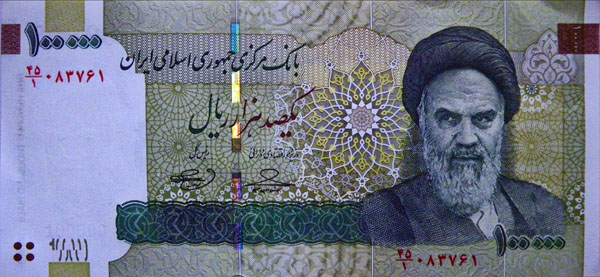November 29 2013
 The rial strengthened modestly Monday, with the dollar going for 29,000 rials as opposed to the 30,000-to-31,000 range, where it has been for the last two months.
The rial strengthened modestly Monday, with the dollar going for 29,000 rials as opposed to the 30,000-to-31,000 range, where it has been for the last two months.
But the Central Bank is understood to be opposed to any major strengthening and may even be intervening already—by throwing dollars on the market—to keep the dollar price from dropping further.
However, there is more impact to Iran’s economy than just the rial’s price from the weekend’s nuclear deal.
By reducing fears of military action against Iran and raising the prospect of reduced sanctions in the future, the Geneva pact may stem capital flight from the country and encourage a revival of domestic investment.
This could be enough to pull the economy out of the recession, which has gripped it for most of the past two years.
“We are feeling the positive sentiment in Iran,” Nariman Aflani, a foreign exchange trader at AFI Group, an Iranian civil engineering firm in Tehran, told the Reuters news agency.
In total, the sanctions concessions are worth about $7 billion over six months—a tiny sum compared to the continued cost of the sanctions, which will deprive Iran of about $30 billion in oil revenues over the agreement’s six-month duration, the US government said.
The rial traded at around 29,000 against the dollar in Tehran’s free market Monday. But Iranian traders said heavy supplies of dollars appeared in the market. The government may have been making more dollars available to stem the strengthening of the rial.
What the government wants is a steady rial, not a stronger rial. It wants to stop the three-decade slide of the rial and hold its steady around 30,000 to the dollar.
A firmer outlook for Iran’s currency could help revive foreign trade in a range of agricultural and consumer goods other than oil, by reducing the foreign exchange risks which have deterred many traders over the past two years.
“Up to now, the trend has been towards more restrictions on trade,” said Hossain Asrar Haghighi, a founder of the Iranian Business Council in Dubai, which is a major conduit for Iran’s trade with the rest of the world.
“What we can say now is that the restrictions are not going to increase still more. And if people do not expect them to increase, they will gradually look at ways to develop business under the current situation,” he told Reuters.
The Geneva deal may not launch any extended period of appreciation for Iran’s rial, since government officials have indicated excessive currency strength could hurt exports and complicate state finances.
By restraining import costs, a firmer long-term outlook for the currency would help the government deal with one of its biggest economic and political headaches—an inflation rate that is one of the highest in the world, but which has come down since Hassan Rohani became president.
And even a modest improvement in economic conditions due to the Geneva deal could give Rohani and his new Central Bank governor, Valiollah Seif, enough political capital to press ahead with difficult reforms of the economy.
Officials have said in recent weeks that reforms may include tighter monetary policy, a politically sensitive step that would be easier if Rohani could point to economic gains during his tenure.




















